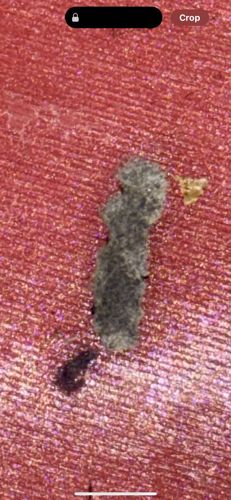Household Casebearer Moth (larva)
Scientific Name: Phereoeca uterella (larva)
Order & Family: Lepidoptera, Tineidae
Size: Larval case: 10-15 mm (0.4-0.6 inches) long; Larva within case: approximately 8-12 mm (0.3-0.5 inches) long.

Natural Habitat
Indoors, commonly found in homes, museums, warehouses, and other buildings. They prefer dark, undisturbed areas such as closets, attics, storage areas, and under furniture. They need access to their preferred food sources.
Diet & Feeding
Mainly keratin-containing materials such as wool, hair, silk, feathers; also fabrics made from these materials, felt, and sometimes other fibrous materials like spiderwebs. They are scavengers and consume shed skin cells, lint, dust, and general detritus.
Behavior Patterns
Larvae construct a case from silk and debris (lint, fibers, dust, hairs) which they carry with them. They feed from within this case, extending their head and legs out. They are often found crawling on walls or floors, and their casings can sometimes be mistaken for lint or dust bunnies. Adult moths are typically poor fliers and are more active at night.
Risks & Benefits
Potential risks include damage to personal property, particularly natural fiber textiles, carpets, and upholstered furniture. They do not bite or sting humans and are not known to transmit diseases. Benefits are minimal to none within a human dwelling; outside, they contribute to the decomposition of organic matter but are generally considered pests due to their indoor habits.
Identified on: 8/30/2025